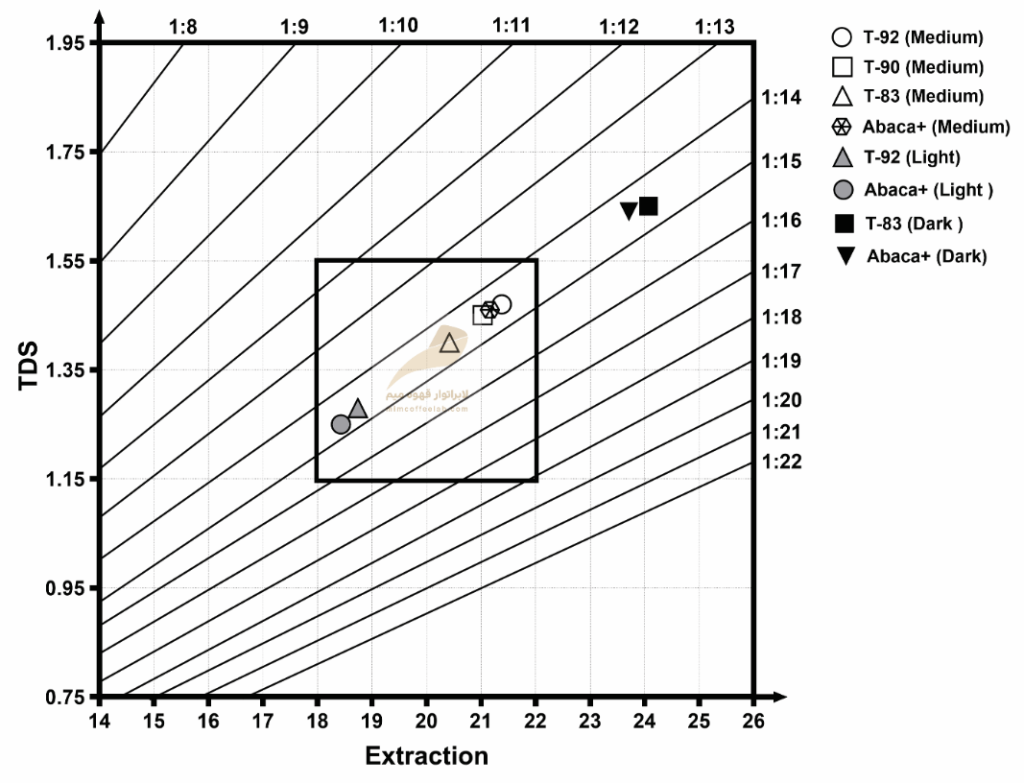Analysis and Evaluation of CAFEC Coffee Filters: T-92, T-90, T-83, and Abaca+
Authors: Masoud Naderlou1 , Hesam Mashhadi2
1: Correspond, Senior Researcher at MimCoffeeLab
2: Researcher at MimCoffeeLab
Email Address: [email protected]
Website: www.mimcoffeelab.com
1. Introduction, Problem Statement, and Objective
In the pour-over coffee brewing process, paper filters play a pivotal role in shaping and balancing the flavor, aromatic profile, acidity, sweetness, aftertaste, body, and overall quality of the final cup. Choosing the right filter significantly impacts the extraction of essential compounds. Japanese brand CAFEC has developed specialized filters (T-92, T-90, T-83, and Abaca+) each designed with unique properties such as density, thickness, crepe structure, and water flow behavior to enhance the brewing experience. The primary goal of this study is to experimentally analyze and validate CAFEC’s claims about how each filter affects parameters like flavor, pH, TDS, sweetness, brew time, and extraction yield.
2. Tools and Equipment Used
To ensure precise and unbiased results, a wide range of professional tools was used: a Decent espresso machine, Mahlkönig EK43T grinder, refractometers, pH meter, microbalance scales, coffees with various roast levels, and a custom-designed filter holder created with a 3D printer. These tools minimized human error and ensured consistency across experiments.
3. Methodology
Two groups of experiments were conducted. In the first phase, one medium-roast coffee was brewed using all filters. In the second phase, each filter was paired with its recommended roast level. To eliminate manual variables, the Decent machine and custom filter holder were used. Parameters such as brew time, extract weight, pH, TDS, and extraction percentage were measured. Sensory analysis was also performed to assess attributes like flavor, aroma, acidity, body, and sweetness.

4. Results
The results confirmed CAFEC’s claims: T-92 produced a clean cup with strong aroma for light roasts; T-90 provided balanced flavor and smooth flow for medium roasts; and T-83 enhanced body and sweetness in dark roasts. The Abaca+ filter served well as a general-purpose filter. While pH differences across filters were minimal, sensory attributes varied significantly due to the filters’ influence on flow rate and extraction behavior.


5. Recommendations
To improve extraction quality, baristas should choose filters based on roast level and desired cup characteristics. T-90 is recommended for cafés due to its consistency and repeatability. The choice of filter should also consider roast depth and grind size. Techniques like fines removal and grind size adjustment can further optimize extraction. Ultimately, selecting the right filter can elevate the coffee experience by tailoring it to specific sensory preferences.
:Full paper Download Link
Share It